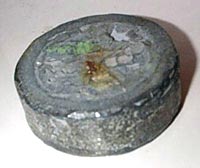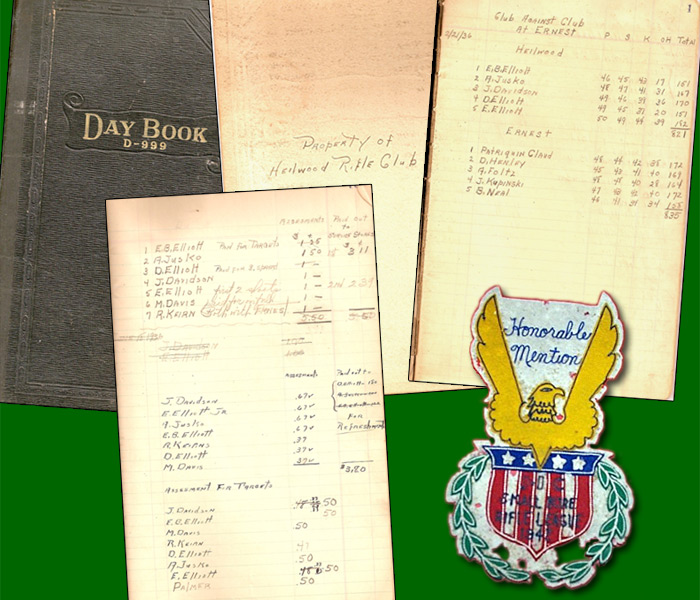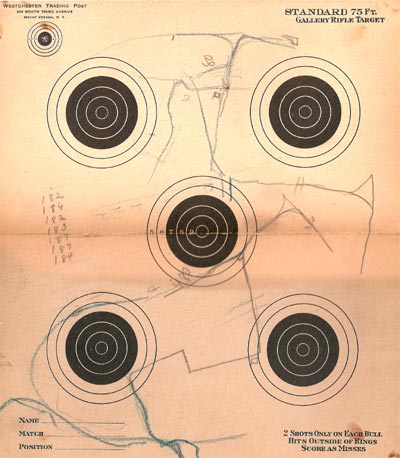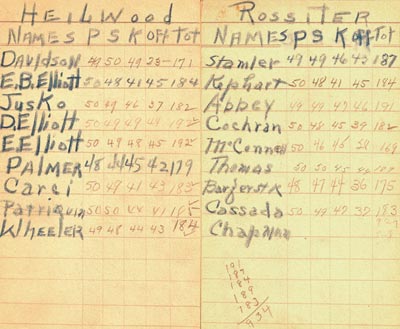The Heilwood Rifle Club originally held matches in the abandoned Dairy Barn building. But on February 5, 1933, the Club opened a new 75-foot, small-caliber, indoor rife range in the basement of the Town Hall. Entertaining the Ernest Rifle & Pistol Club that day, the Heilwood shooters lost by a score of 768 to 690. Shooting for Heilwood were: John Conerby; Jack Davidson; Gene Elliott; Gene Elliott, Jr.; Charles Hodges; Alex Jusko; George Lunn; Harry Lunn; Harry McCardle; and Mike Wanchisn (see clipping). In subsequent matches, additional men shooting for Heilwood included J. Churella; M. Davis; H. Dinsmore; F. Ganoe; R. Keirn; R. Lunn; J. McCormick; C. Palmer; A. Stiffler; and men with the last names of Abbey, Carci, Davis, Patriquin, and Wheeler.
Records indicate that Heilwood shot competively against Ernest, Rossiter, and Indiana. As was the practice at these matches, the home team would furnish a light lunch after the match, followed by the teams having a little “off-hand” shooting. One such engagement with the Ernest team didn’t last too long. A member from Ernest shot out the lights at the indoor range and the evening came to an early end.
The Heilwood team continued to compete until March 1941, which is the last time a newspaper report can be found. The Heilwood team evidently disbanded for some reason or reasons*. However, individual members from the team continued to shoot competitively as members of other teams within the county.
*The disbanding of the team may have been directly related to the Town Hall being cited for unsafe conditions. The building was taken from the tax records in 1940, which suggests its possible demolition.
In an interview with a former Heilwood resident regarding the rifle range located in the Town Hall, he related the following story:
“When I was about 10 years old, the gang of kids I ran around with managed to get into the rifle range in the basement of the Town Hall. At the end where the targets were, they had installed large baffle plates to deflect the bullets into a pit of sawdust, where we uncovered a real find – numerous lead bullets. We found a container and gathered up all the lead bullets we could, and then headed home. In the alley behind our house, we built a large fire and started to melt the lead – it worked like a charm. The result – my mother had a new door stop.”
WINCHESTER MODEL 52
The Winchester Model 52 was a bolt action .22 caliber target rifle introduced by the Winchester Repeating Arms Company in 1920. Known as the “King of the .22’s”, it was the premier small bore match rifle in the United States into the 1970s. Herbert Houze, the Winchester historian, called it “perfection in design”.









